Strategies for Assessing Student Progress
Explore innovative strategies to assess student progress and uncover how we can truly gauge what students have understood beyond surface-level knowledge.


Explore innovative strategies to assess student progress and uncover how we can truly gauge what students have understood beyond surface-level knowledge.
How do educators truly know if their students are grasping the material? Assessing student progress effectively is vital in shaping instructional strategies that meet diverse learning needs. Understanding the methods and tools available to measure progress can significantly enhance teaching and learning experiences.
| Feature | Standardized Testing | Formative Assessment | Observational Methods |
|---|---|---|---|
| Best For | Measuring performance against national benchmarks and predicting future outcomes | Real-time tracking of student progress and adjusting teaching strategies | Gauging student engagement and participation during lessons |
| Key Strength | Provides objective, comparable data across schools and regions | Offers immediate feedback to inform instructional decisions | Captures authentic learning behaviors and verbal understanding |
| Limitation | May miss deeper understanding and real-time learning progress | Requires consistent implementation and time investment | Can be subjective and difficult to standardize across educators |
| Examples | SATs, GCSEs, MAP Growth, NAPLAN | Exit tickets, quizzes, digital tools like Edpuzzle | Classroom discussions, peer questions, exploratory conversations |
The landscape of student assessment includes a variety of approaches, such as standardized tests, formative assessments, and observational methods. Each method serves a unique purpose, providing valuable insights that inform instructional decisions. Utilizing digital platforms and data visualization tools may further amplify these insights, allowing for clearer communication of student growth.
This article explores effective strategies for assessing student progress. By delving into the significance of assessment, methods, tools, and research insights, educators will gain practical guidance to support students’ learning journeys and foster meaningful engagement with stakeholders.
 summative assessment methods for educators" loading="lazy">
summative assessment methods for educators" loading="lazy">
The most effective methods combine formative assessments like exit tickets and peer questioning with real-time engagement tracking during lessons. Teachers should use a mix of verbal assessments, observational data, and digital tools to capture both surface knowledge and deeper understanding. This multi-method approach reveals learning gaps that traditional tests often miss.
There are several ways that teachers can assess student engagement during lessons, using both formal and informal methods. Instead of relying solely on traditional testing, approaches such as live classroom observations, monitoring student contributions in discussions, and using interactive tools can provide valuable insights.
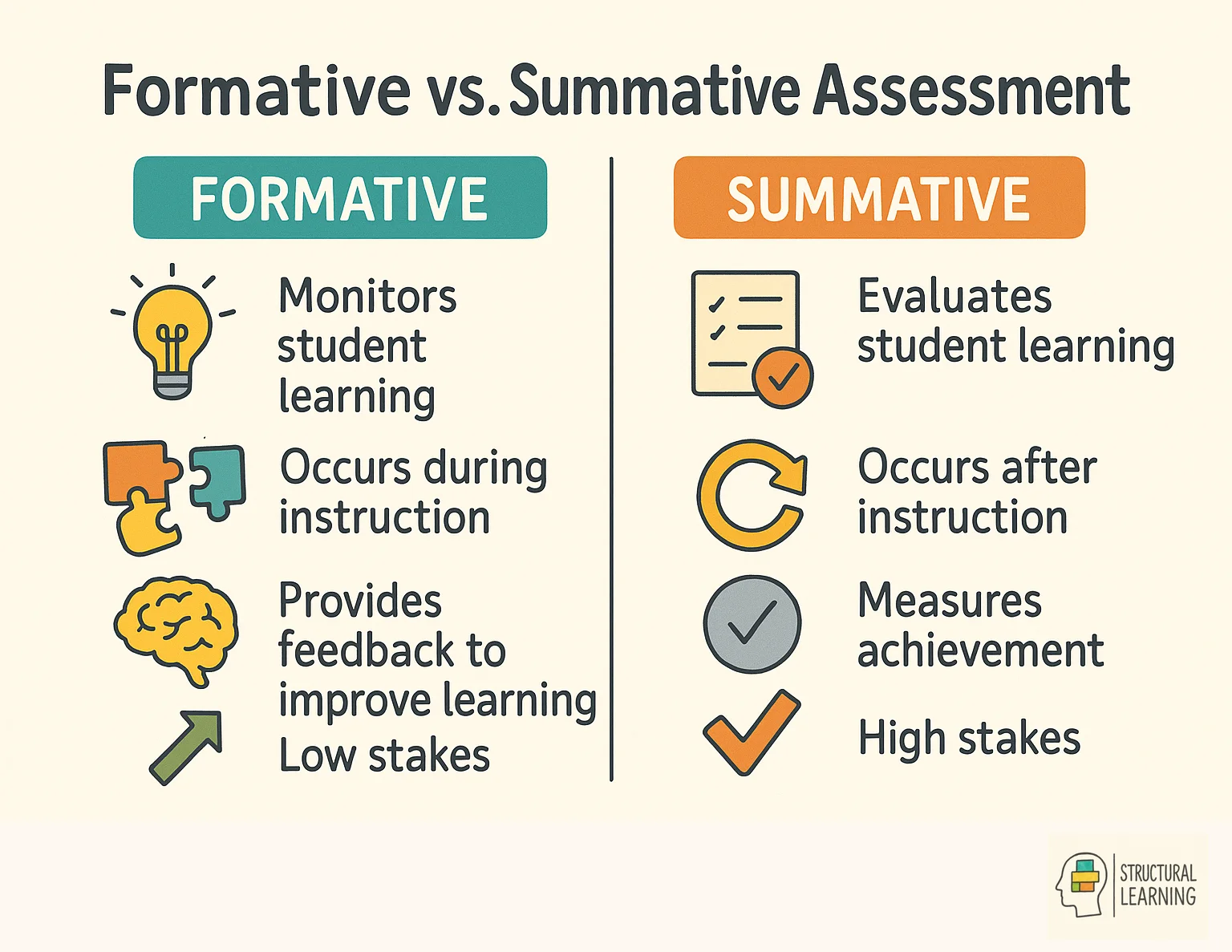
These methods allow educators to gauge how well students are participating and processing information in real-time. Combining these with more structured assessments, like quizzes or written assignments, ensures a comprehensive view of both learner participation and understanding across various learning contexts. This blended approach helps in identifying individual progress and areas for further development.
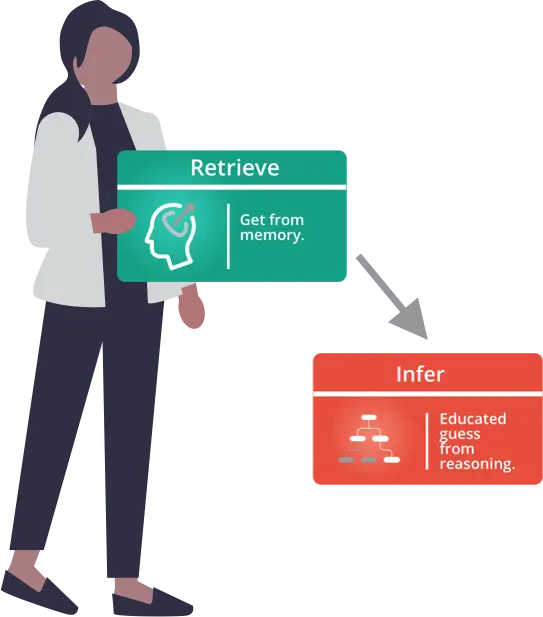
In the UK, assessments like SATs (Standard Assessment Tests) and GCSEs (General Certificate of Secondary Education) serve as key indicators of student performance, while in the US, assessments such as MAP Growth and state-specific exams fulfill a similar role. In Australia, NAPLAN (National Assessment Program, Literacy and Numeracy) is used to measure student progress across critical learning areas.
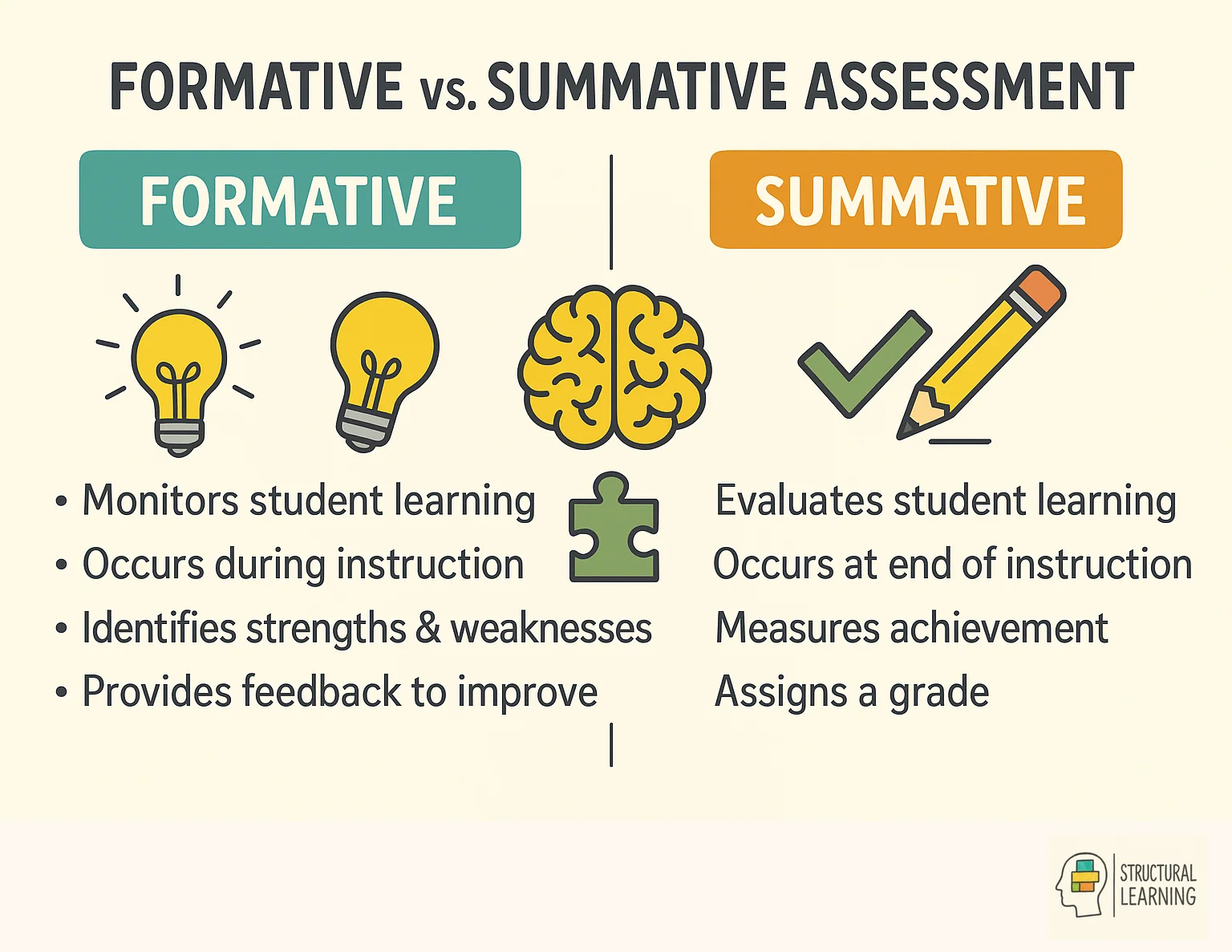
These standardized tests go beyond assigning grades; they predict future outcomes by comparing individual student performance to national averages, such as the scaled score in SATs, the RIT score in MAP Growth, or NAPLAN bands. Educators can use these metrics to track student progress, identify strengths and weaknesses, and tailor interventions accordingly to enhance academic growth in relation to national benchmarks. This comprehensive approach enables teachers across these countries to make informed decisions on improving student outcomes.
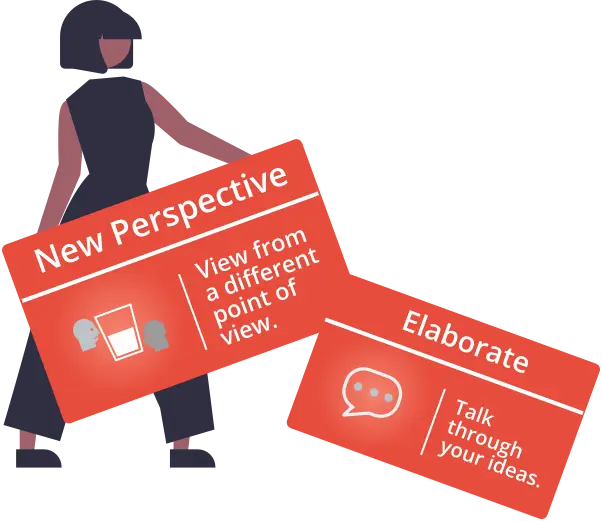
Formative assessments are key for ongoing evaluation of student progress. Tools like Edpuzzle’s Gradebook allow teachers to track classroom and individual student performance in real-time. By examining trends in student work and engagement, educators can adjust their teaching strategies to better meet the needs of their students, ensuring continuous progress.

Summative assessments offer a comprehensive review of student understanding at the end of a learning period. Features like Edpuzzle’s timeline-based reporting allow educators to see overall classroom trends and individual achievement across various assignments. These assessments help teachers gauge overall knowledge retention and guide decisions about future instruction.
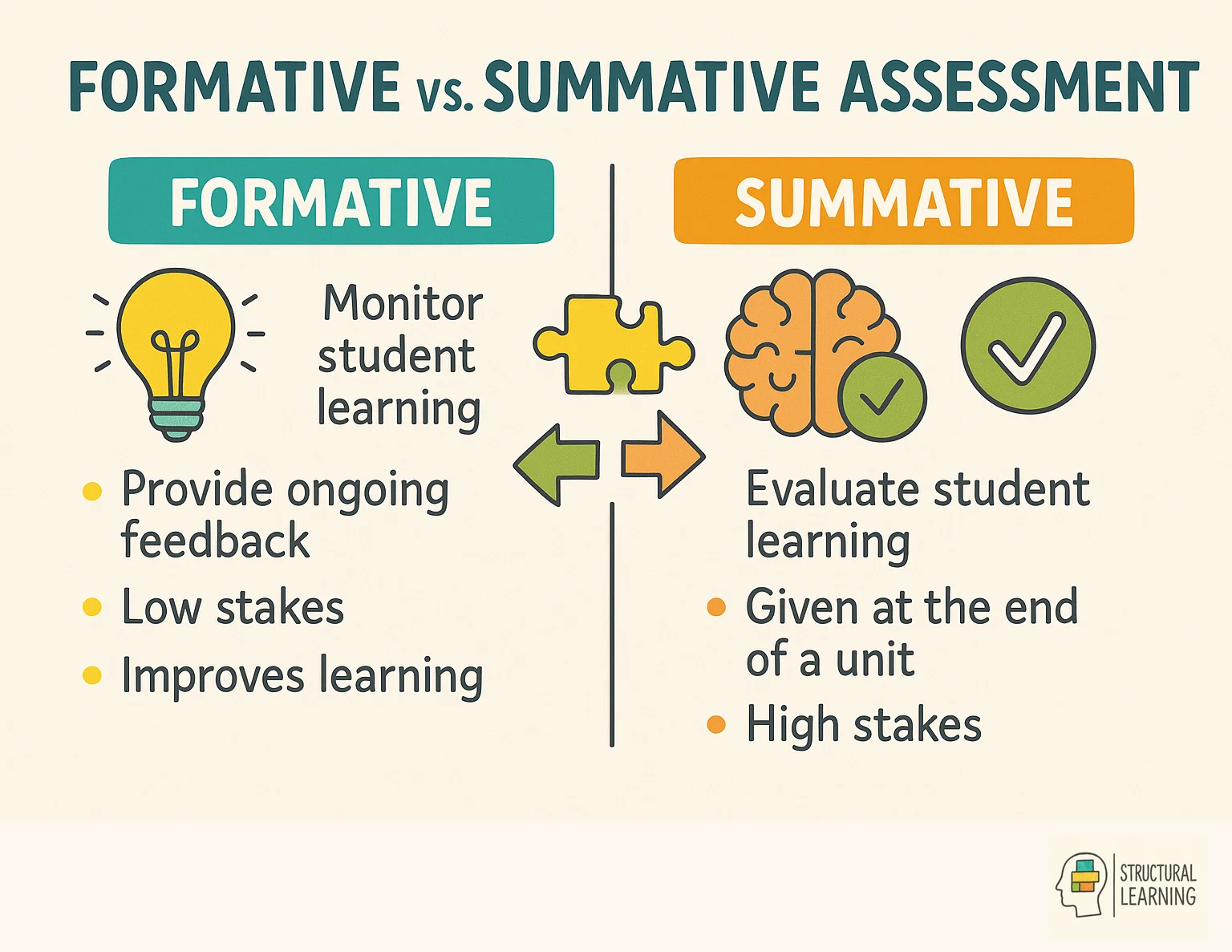
Tracking student involvement through observational assessments provides real-time insights into how students interact with content. Tools that track student participation, such as color-coded engagement bars, help educators identify when and how students are engaging with lessons. This allows for immediate intervention or support, ensuring that students stay on track.
Peer and self-assessments foster student reflection and accountability in their own learning process. These methods encourage students to evaluate their own work or that of their peers, building critical thinking and self-regulation skills. Regular opportunities for self-assessment can empower students to take greater ownership of their progress and engage more deeply with the learning material.
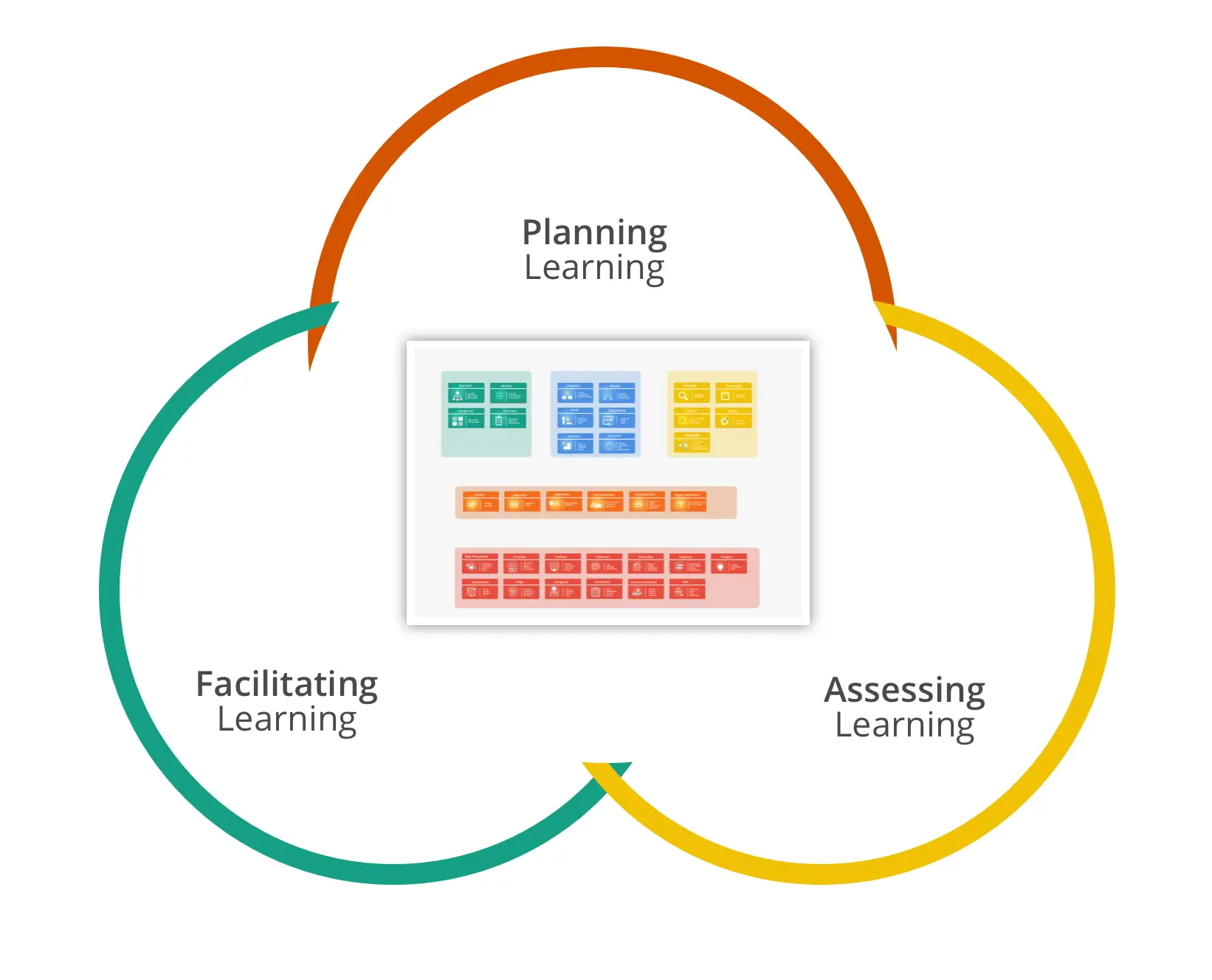
Teachers can monitor depth of understanding by using thinking frameworks that expose how students process concepts, not just what they memorize. Exit tickets with open-ended questions and peer-to-peer explanations reveal whether students can apply knowledge in new contexts. Digital platforms that track problem-solving steps provide real-time data on conceptual mastery.
The Thinking Framework offers a versatile approach for monitoring and developing student understanding in the classroom. By structuring activities around specific learning actions, educators can gain deeper insights into how well students are grasping and applying key concepts. The following are seven practical strategies that leverage the Thinking Framework to assess student progress, promote critical thinking, and provide meaningful feedback to support growth and performance in everyday lessons.
Here are seven practical ways the Thinking Framework can be used to monitor and develop student understanding:
Verbal assessments through exploratory conversations uncover understanding that written work might not capture, especially for students who struggle with writing. Teachers can ask probing questions that require students to explain their reasoning and connect concepts. This method is particularly effective for identifying misconceptions and gauging comprehension when traditional assessments fall short.
Understanding what students know and how deeply they grasp the material often extends beyond written assessments. By integrating verbal and oral techniques, teachers can gain valuable insights into students' thought processes and cognitive depth. The Structural Learning Toolkit, with tools such as Writer’s Block and graphic organizers, provides powerful platforms to facilitate exploratory and explanatory conversations.
These methods encourage students to articulate their ideas, enabling educators to gauge understanding through discussion-based activities. Below are five original strategies for using the Structural Learning Toolkit to assess student understanding through verbal means:
These verbal methods, grounded in the Structural Learning Toolkit, offer teachers practical tools for assessing student understanding through rich, interactive dialogue. By encouraging exploratory and explanatory talk, these strategies not only help measure outcomes for students but also promote higher-level thinking and engagement.
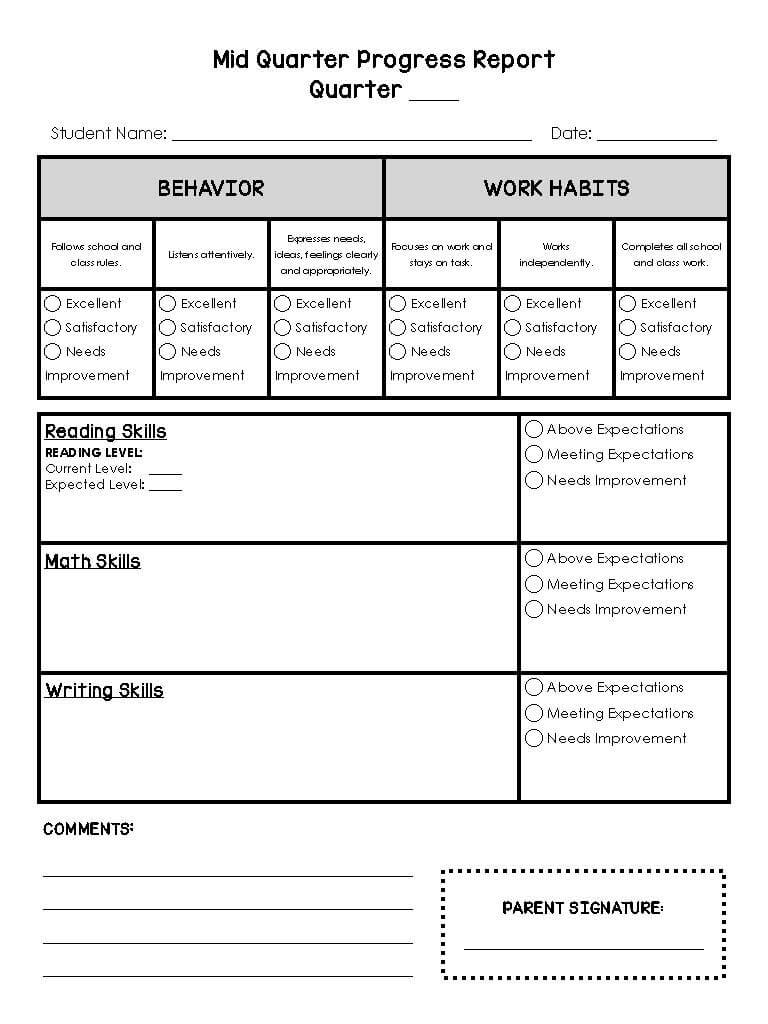
Digital platforms with data visualization features transform raw assessment data into clear progress reports that highlight growth patterns and learning gaps. Tools that integrate formative assessment data with learning objectives provide actionable insights for intervention timing. The best platforms allow teachers to customize reports for different stakeholders while maintaining focus on student growth rather than just grades.
Digital platforms now allow parents, guardians, and educators to monitor student progress in real time through user-friendly interfaces. Timely access to grades, attendance, and assessment data ensures that families can proactively support students throughout the academic year, not just at the end of terms. Progress reports are no longer confined to traditional report cards; they can be accessed at regular intervals, providing ongoing transparency that strengthens the partnership between schools and families.
These platforms also offer versatility in how reports are generated. Progress data can be sorted based on various criteria, such as academic performance or engagement metrics like assignment completion and recent activity. Students from grade five onwards can log into their accounts, fostering a sense of responsibility for tracking their own academic progress. For educators, this sorting function simplifies the process of identifying students who may need additional support by organizing data across a range of performance indicators.
Beyond progress reporting, digital assessment platforms provide a comprehensive view of student achievement. Teachers can evaluate student progress across multiple assignments using tools like Top Marks, which support both formative and summative assessments.
These platforms enable educators to generate reports that measure student growth against benchmarks, track progress across specific instructional areas, and compare student data over set intervals. The reverse chronological display of test results helps teachers stay up to date, and data can be exported in formats like CSV for use in broader academic reporting.
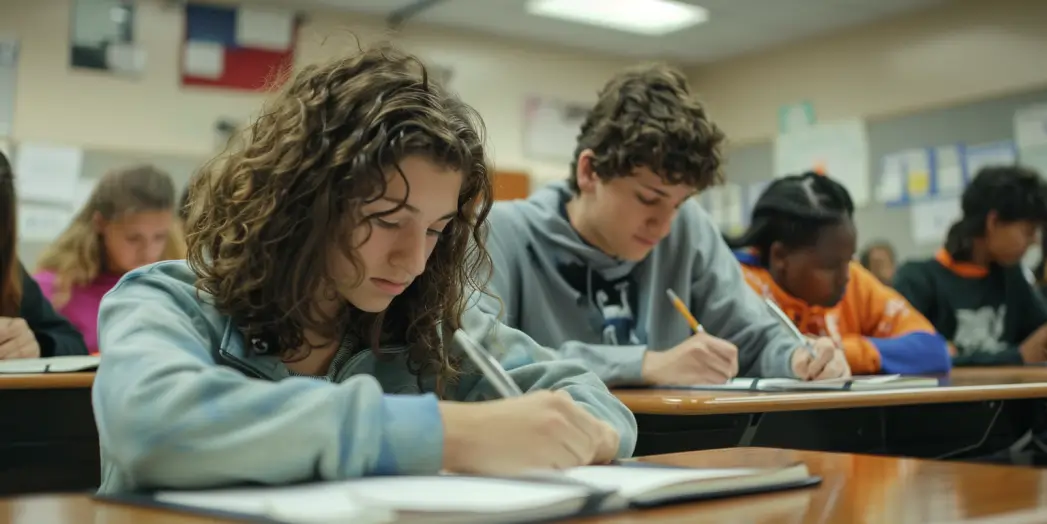
The integration of Learning Management Systems (LMS) such as Google Classroom and Active Learn creates an interconnected ecosystem that streamlines assignment management and feedback. Students can easily transition from their LMS environment to track their academic progress, attendance, and behavior, reinforcing accountability for their own learning journey. Teachers can provide targeted feedback on assignments, to which students can respond, promoting a dynamic, interactive learning process across all levels of education.

The biggest challenges include balancing time for meaningful assessment with curriculum demands and ensuring assessments capture diverse learning styles fairly. Teachers struggle to move beyond surface-level data collection to insights that actually inform instruction. Additionally, communicating progress in ways that motivate rather than discourage students requires careful consideration of assessment frequency and format.
The collection and analysis of student progress data present several challenges for educators. As schools seek comprehensive tracking systems to monitor program completion and pinpoint missing assignments, the burden of manual data management can be immense. When students answer too many items incorrectly, calculating goal performance becomes problematic due to insufficient data quality. This can prevent a full understanding of student understanding and mastery.
Further compounding the issue, the systems in place may not possess the necessary functionality or ease of use to facilitate effective data retrieval and analysis. This can hinder an educator's ability to respond promptly to students' needs. Another pivotal concern is the reliance on standardized tests that may offer constricted outcomes. An example of such a constraint is the appearance of an asterisk (*) next to student scores, denoting calculation concerns where students have difficulty with assessment items.
These systemic issues underscore the challenges educators face and the necessity for improved tools and methodologies to accurately assess and support student progress.
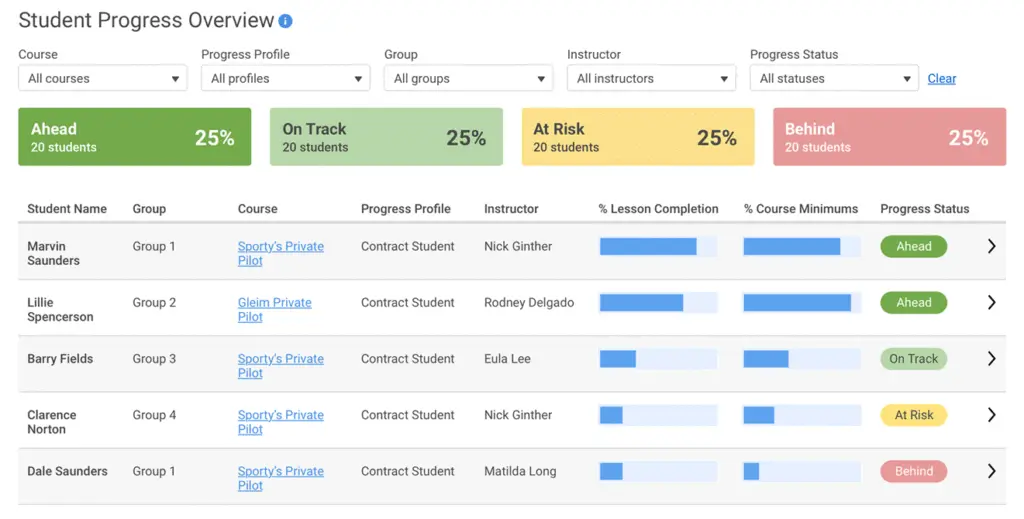
The introduction of the Student Progress report delivers on the promise of fairness by enabling multi-term tracking of student performance. This comprehensive overview mitigates bias by ensuring a longitudinal view of student growth. The report's sorting features help instructors pinpoint which students may require more support, fostering an inclusive assessment environment.
Parents and students benefit from real-time grade visibility, which synergizes efforts in overseeing and improving academic performance. Innovations such as automatic page refreshes and individual student progress breakdowns guarantee that educators work with up-to-the-minute, accurate data. This is pivotal in crafting instruction that reaches every student.
Furthermore, digitizing progress reports democratizes data access for all educational stakeholders, eradicating disparities that archaic reporting techniques may cause. The move towards digital is more than procedural; it symbolizes an investment in equity, where every student's academic journey is visible and valued.
An optimal student progress tracking system blends quantitative and qualitative data. This system allows access to in-depth reports for each learner, displaying information such as total scores, time invested, and assignment advancement. Customizable views on student assignments offer flexibility, breaking free from rigid default date ranges to suit various assessment needs.
Exportable grades and progress data circumvent tedious manual data handling, simplifying life for school administrators. Visual cues like flags for late submissions underscore the importance of punctuality and provide insights into a student's time management.
Encouraging students to re-engage with lesson content, such as rewatching videos, underscores the value of qualitative interaction with course materials. This focus not only enriches the learning experience but also shapes more holistic perceptions of student performance.
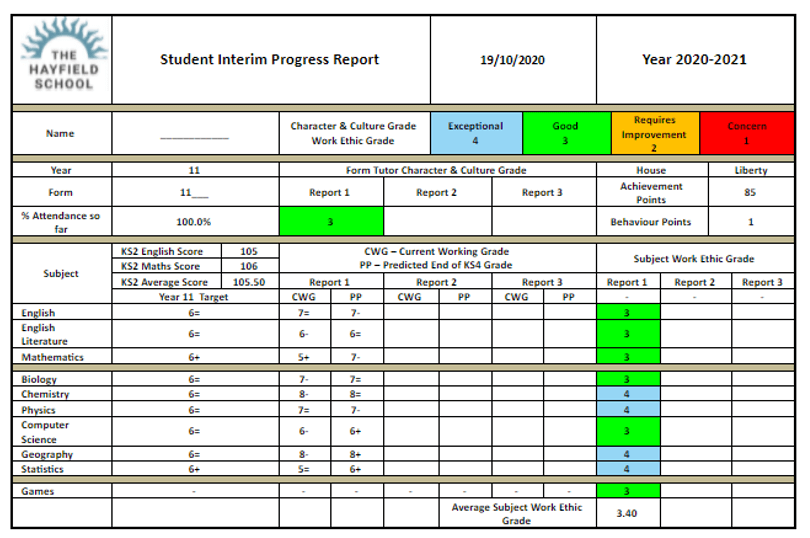
Student assessment is shifting from periodic testing to continuous, multi-modal evaluation that captures real-time learning progress. Future directions include AI-powered analytics that identify learning patterns and personalized intervention points before students fall behind. The focus is moving toward assessment as a learning tool itself, where students actively participate in tracking their own progress.
As assessment practices develop across the UK, US, and Australia, the future of measuring student progress will rely on refining tools that align with each country's curriculum and educational standards. Tools such as MAP Growth, used in the US and Australia, and equivalent assessments in the UK, will continue to be essential in tracking student growth over time. For these tools to be most effective, having access to comprehensive historical data from a student's entire academic journey is critical. This allows educators to create a detailed narrative of individual student progress, vital for tailored teaching approaches.
In both the UK and Australia, the communication of student performance data to families is also evolving. Reports like the Family Report in the US, or similar formats in Australia and the UK, provide user-friendly ways to keep families informed about their child’s progress. Meanwhile, platforms like the Student Progress Center ensure that parents and guardians can access up-to-date information on grades and assessments, enhancing transparency.
Looking ahead, feedback for students will increasingly become more personalized, based on detailed insights into student responses and engagement with the curriculum. This will be supported by more advanced data analytics, focusing not just on the outcomes students achieve but on the quality of their learning experiences and their depth of understanding across subjects in classroom lessons.
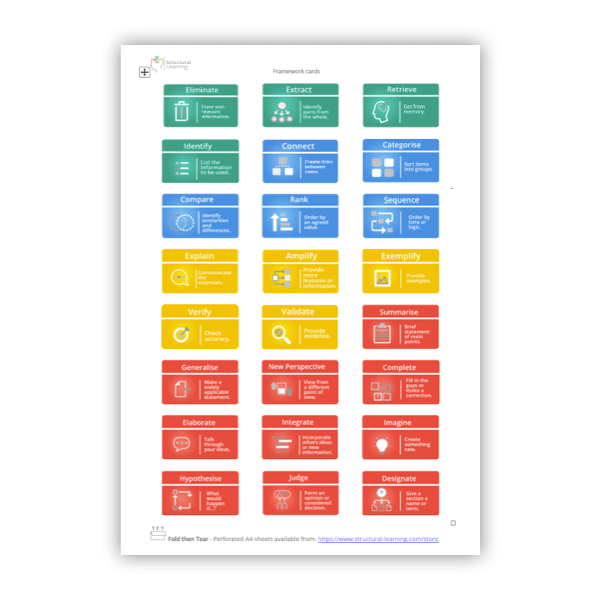
Alternative approaches include portfolio-based assessment, self-reflection journals, and competency-based progression that focuses on mastery rather than time spent. Some educators advocate for narrative evaluations that describe student growth in context rather than reducing it to numbers. These methods prioritize holistic understanding of student development over standardized metrics.
The following studies demonstrate the effectiveness of various progress monitoring tools and their impact on student learning outcomes across different academic areas.
1. Use of a Progress Monitoring System to Enable Teachers to Differentiate Mathematics Instruction (Ysseldyke & Tardrew, 2007)
This study explores how a progress monitoring system in mathematics, Accelerated Math, improved student performance across all achievement levels. Teachers using the system provided more individualized instruction, leading to significant gains in math scores, increased active learning, and positive attitudes towards math.
2. Testing the Importance of Individual Growth in Predicting State-Level Outcomes Beyond Status Measures (Petscher et al., 2022)
This study analyzes how individual growth measures (such as simple and average differences) predict reading outcomes in large student cohorts. It finds that growth estimates contribute significantly to understanding student reading comprehension progress beyond static assessment scores.
3. Formative Evaluation of Academic Progress: How Much Growth Can We Expect? (Fuchs, 1993)
This research examines weekly academic growth using Curriculum-Based Measurement (CBM) in reading, math, and spelling over one year. It provides guidelines for establishing realistic student progress goals and discusses how academic growth data can inform developmental theories and instructional strategies.
4. Consequences of Misspecifying Levels of Variance in Cross-Classified Longitudinal Data Structures (Gilbert et al., 2016)
The study highlights the importance of accounting for classroom and school effects when estimating reading progress. Results show that failing to include these variables leads to incorrect variance estimates, which can affect the accuracy of growth predictions.
5. Effects of Reading Curriculum-Based Measurement (R-CBM) Teacher Feedback in General Education Classrooms (Graney & Shinn, 2005)
This study evaluates the impact of providing teachers with R-CBM progress data for low-performing students. Although teachers did not make significant instructional changes, overall student reading performance improved, suggesting that progress monitoring itself can drive student improvement.
Formative assessments like exit tickets and quizzes provide real-time feedback during learning to adjust teaching strategies immediately, whilst summative assessments offer comprehensive reviews at the end of learning periods to gauge overall knowledge retention. Formative assessments are best for ongoing progress tracking and intervention, whereas summative assessments help evaluate final outcomes and inform future instructional planning.
Teachers can use real-time engagement tracking, observational methods, and verbal assessments to capture authentic learning behaviours that standardised tests often miss. By combining exit tickets with open-ended questions, peer-to-peer explanations, and digital tools that track problem-solving steps, educators can assess both surface knowledge and conceptual mastery.
Digital platforms like Edpuzzle offer gradebook features and timeline-based reporting that allow teachers to monitor classroom and individual student performance as it happens. These tools provide colour-coded engagement bars and data visualisation features that help educators identify when students are struggling and need immediate intervention or support.
Observational assessments capture authentic learning behaviours during classroom discussions, peer questions, and exploratory conversations that reveal how students actually process concepts. These methods provide immediate insights into student engagement and participation that can inform real-time instructional adjustments, though they require consistent implementation and can be more subjective than standardised measures.
Peer and self-assessments encourage students to evaluate their own work and that of their classmates, fostering critical thinking and self-regulation skills. These methods empower students to take greater ownership of their learning progress whilst providing teachers with insights into students' ability to reflect on and articulate their understanding.
The Thinking Framework structures activities around specific learning actions that expose how students process concepts rather than just memorise information. Teachers can implement exit tickets with open-ended questions and peer explanations that reveal whether students can apply knowledge in new contexts, providing evidence of genuine conceptual understanding.
Standardised tests like SATs, GCSEs, and NAPLAN may miss deeper understanding and real-time learning progress, focusing primarily on performance against national benchmarks. Whilst they provide objective, comparable data across schools and regions, they cannot capture the nuanced thinking processes and authentic learning behaviours that formative and observational methods reveal.
How do educators truly know if their students are grasping the material? Assessing student progress effectively is vital in shaping instructional strategies that meet diverse learning needs. Understanding the methods and tools available to measure progress can significantly enhance teaching and learning experiences.
| Feature | Standardized Testing | Formative Assessment | Observational Methods |
|---|---|---|---|
| Best For | Measuring performance against national benchmarks and predicting future outcomes | Real-time tracking of student progress and adjusting teaching strategies | Gauging student engagement and participation during lessons |
| Key Strength | Provides objective, comparable data across schools and regions | Offers immediate feedback to inform instructional decisions | Captures authentic learning behaviors and verbal understanding |
| Limitation | May miss deeper understanding and real-time learning progress | Requires consistent implementation and time investment | Can be subjective and difficult to standardize across educators |
| Examples | SATs, GCSEs, MAP Growth, NAPLAN | Exit tickets, quizzes, digital tools like Edpuzzle | Classroom discussions, peer questions, exploratory conversations |
The landscape of student assessment includes a variety of approaches, such as standardized tests, formative assessments, and observational methods. Each method serves a unique purpose, providing valuable insights that inform instructional decisions. Utilizing digital platforms and data visualization tools may further amplify these insights, allowing for clearer communication of student growth.
This article explores effective strategies for assessing student progress. By delving into the significance of assessment, methods, tools, and research insights, educators will gain practical guidance to support students’ learning journeys and foster meaningful engagement with stakeholders.
 summative assessment methods for educators" loading="lazy">
summative assessment methods for educators" loading="lazy">
The most effective methods combine formative assessments like exit tickets and peer questioning with real-time engagement tracking during lessons. Teachers should use a mix of verbal assessments, observational data, and digital tools to capture both surface knowledge and deeper understanding. This multi-method approach reveals learning gaps that traditional tests often miss.
There are several ways that teachers can assess student engagement during lessons, using both formal and informal methods. Instead of relying solely on traditional testing, approaches such as live classroom observations, monitoring student contributions in discussions, and using interactive tools can provide valuable insights.

These methods allow educators to gauge how well students are participating and processing information in real-time. Combining these with more structured assessments, like quizzes or written assignments, ensures a comprehensive view of both learner participation and understanding across various learning contexts. This blended approach helps in identifying individual progress and areas for further development.

In the UK, assessments like SATs (Standard Assessment Tests) and GCSEs (General Certificate of Secondary Education) serve as key indicators of student performance, while in the US, assessments such as MAP Growth and state-specific exams fulfill a similar role. In Australia, NAPLAN (National Assessment Program, Literacy and Numeracy) is used to measure student progress across critical learning areas.

These standardized tests go beyond assigning grades; they predict future outcomes by comparing individual student performance to national averages, such as the scaled score in SATs, the RIT score in MAP Growth, or NAPLAN bands. Educators can use these metrics to track student progress, identify strengths and weaknesses, and tailor interventions accordingly to enhance academic growth in relation to national benchmarks. This comprehensive approach enables teachers across these countries to make informed decisions on improving student outcomes.

Formative assessments are key for ongoing evaluation of student progress. Tools like Edpuzzle’s Gradebook allow teachers to track classroom and individual student performance in real-time. By examining trends in student work and engagement, educators can adjust their teaching strategies to better meet the needs of their students, ensuring continuous progress.

Summative assessments offer a comprehensive review of student understanding at the end of a learning period. Features like Edpuzzle’s timeline-based reporting allow educators to see overall classroom trends and individual achievement across various assignments. These assessments help teachers gauge overall knowledge retention and guide decisions about future instruction.

Tracking student involvement through observational assessments provides real-time insights into how students interact with content. Tools that track student participation, such as color-coded engagement bars, help educators identify when and how students are engaging with lessons. This allows for immediate intervention or support, ensuring that students stay on track.
Peer and self-assessments foster student reflection and accountability in their own learning process. These methods encourage students to evaluate their own work or that of their peers, building critical thinking and self-regulation skills. Regular opportunities for self-assessment can empower students to take greater ownership of their progress and engage more deeply with the learning material.

Teachers can monitor depth of understanding by using thinking frameworks that expose how students process concepts, not just what they memorize. Exit tickets with open-ended questions and peer-to-peer explanations reveal whether students can apply knowledge in new contexts. Digital platforms that track problem-solving steps provide real-time data on conceptual mastery.
The Thinking Framework offers a versatile approach for monitoring and developing student understanding in the classroom. By structuring activities around specific learning actions, educators can gain deeper insights into how well students are grasping and applying key concepts. The following are seven practical strategies that leverage the Thinking Framework to assess student progress, promote critical thinking, and provide meaningful feedback to support growth and performance in everyday lessons.
Here are seven practical ways the Thinking Framework can be used to monitor and develop student understanding:
Verbal assessments through exploratory conversations uncover understanding that written work might not capture, especially for students who struggle with writing. Teachers can ask probing questions that require students to explain their reasoning and connect concepts. This method is particularly effective for identifying misconceptions and gauging comprehension when traditional assessments fall short.
Understanding what students know and how deeply they grasp the material often extends beyond written assessments. By integrating verbal and oral techniques, teachers can gain valuable insights into students' thought processes and cognitive depth. The Structural Learning Toolkit, with tools such as Writer’s Block and graphic organizers, provides powerful platforms to facilitate exploratory and explanatory conversations.
These methods encourage students to articulate their ideas, enabling educators to gauge understanding through discussion-based activities. Below are five original strategies for using the Structural Learning Toolkit to assess student understanding through verbal means:
These verbal methods, grounded in the Structural Learning Toolkit, offer teachers practical tools for assessing student understanding through rich, interactive dialogue. By encouraging exploratory and explanatory talk, these strategies not only help measure outcomes for students but also promote higher-level thinking and engagement.

Digital platforms with data visualization features transform raw assessment data into clear progress reports that highlight growth patterns and learning gaps. Tools that integrate formative assessment data with learning objectives provide actionable insights for intervention timing. The best platforms allow teachers to customize reports for different stakeholders while maintaining focus on student growth rather than just grades.
Digital platforms now allow parents, guardians, and educators to monitor student progress in real time through user-friendly interfaces. Timely access to grades, attendance, and assessment data ensures that families can proactively support students throughout the academic year, not just at the end of terms. Progress reports are no longer confined to traditional report cards; they can be accessed at regular intervals, providing ongoing transparency that strengthens the partnership between schools and families.
These platforms also offer versatility in how reports are generated. Progress data can be sorted based on various criteria, such as academic performance or engagement metrics like assignment completion and recent activity. Students from grade five onwards can log into their accounts, fostering a sense of responsibility for tracking their own academic progress. For educators, this sorting function simplifies the process of identifying students who may need additional support by organizing data across a range of performance indicators.
Beyond progress reporting, digital assessment platforms provide a comprehensive view of student achievement. Teachers can evaluate student progress across multiple assignments using tools like Top Marks, which support both formative and summative assessments.
These platforms enable educators to generate reports that measure student growth against benchmarks, track progress across specific instructional areas, and compare student data over set intervals. The reverse chronological display of test results helps teachers stay up to date, and data can be exported in formats like CSV for use in broader academic reporting.

The integration of Learning Management Systems (LMS) such as Google Classroom and Active Learn creates an interconnected ecosystem that streamlines assignment management and feedback. Students can easily transition from their LMS environment to track their academic progress, attendance, and behavior, reinforcing accountability for their own learning journey. Teachers can provide targeted feedback on assignments, to which students can respond, promoting a dynamic, interactive learning process across all levels of education.

The biggest challenges include balancing time for meaningful assessment with curriculum demands and ensuring assessments capture diverse learning styles fairly. Teachers struggle to move beyond surface-level data collection to insights that actually inform instruction. Additionally, communicating progress in ways that motivate rather than discourage students requires careful consideration of assessment frequency and format.
The collection and analysis of student progress data present several challenges for educators. As schools seek comprehensive tracking systems to monitor program completion and pinpoint missing assignments, the burden of manual data management can be immense. When students answer too many items incorrectly, calculating goal performance becomes problematic due to insufficient data quality. This can prevent a full understanding of student understanding and mastery.
Further compounding the issue, the systems in place may not possess the necessary functionality or ease of use to facilitate effective data retrieval and analysis. This can hinder an educator's ability to respond promptly to students' needs. Another pivotal concern is the reliance on standardized tests that may offer constricted outcomes. An example of such a constraint is the appearance of an asterisk (*) next to student scores, denoting calculation concerns where students have difficulty with assessment items.
These systemic issues underscore the challenges educators face and the necessity for improved tools and methodologies to accurately assess and support student progress.

The introduction of the Student Progress report delivers on the promise of fairness by enabling multi-term tracking of student performance. This comprehensive overview mitigates bias by ensuring a longitudinal view of student growth. The report's sorting features help instructors pinpoint which students may require more support, fostering an inclusive assessment environment.
Parents and students benefit from real-time grade visibility, which synergizes efforts in overseeing and improving academic performance. Innovations such as automatic page refreshes and individual student progress breakdowns guarantee that educators work with up-to-the-minute, accurate data. This is pivotal in crafting instruction that reaches every student.
Furthermore, digitizing progress reports democratizes data access for all educational stakeholders, eradicating disparities that archaic reporting techniques may cause. The move towards digital is more than procedural; it symbolizes an investment in equity, where every student's academic journey is visible and valued.
An optimal student progress tracking system blends quantitative and qualitative data. This system allows access to in-depth reports for each learner, displaying information such as total scores, time invested, and assignment advancement. Customizable views on student assignments offer flexibility, breaking free from rigid default date ranges to suit various assessment needs.
Exportable grades and progress data circumvent tedious manual data handling, simplifying life for school administrators. Visual cues like flags for late submissions underscore the importance of punctuality and provide insights into a student's time management.
Encouraging students to re-engage with lesson content, such as rewatching videos, underscores the value of qualitative interaction with course materials. This focus not only enriches the learning experience but also shapes more holistic perceptions of student performance.

Student assessment is shifting from periodic testing to continuous, multi-modal evaluation that captures real-time learning progress. Future directions include AI-powered analytics that identify learning patterns and personalized intervention points before students fall behind. The focus is moving toward assessment as a learning tool itself, where students actively participate in tracking their own progress.
As assessment practices develop across the UK, US, and Australia, the future of measuring student progress will rely on refining tools that align with each country's curriculum and educational standards. Tools such as MAP Growth, used in the US and Australia, and equivalent assessments in the UK, will continue to be essential in tracking student growth over time. For these tools to be most effective, having access to comprehensive historical data from a student's entire academic journey is critical. This allows educators to create a detailed narrative of individual student progress, vital for tailored teaching approaches.
In both the UK and Australia, the communication of student performance data to families is also evolving. Reports like the Family Report in the US, or similar formats in Australia and the UK, provide user-friendly ways to keep families informed about their child’s progress. Meanwhile, platforms like the Student Progress Center ensure that parents and guardians can access up-to-date information on grades and assessments, enhancing transparency.
Looking ahead, feedback for students will increasingly become more personalized, based on detailed insights into student responses and engagement with the curriculum. This will be supported by more advanced data analytics, focusing not just on the outcomes students achieve but on the quality of their learning experiences and their depth of understanding across subjects in classroom lessons.

Alternative approaches include portfolio-based assessment, self-reflection journals, and competency-based progression that focuses on mastery rather than time spent. Some educators advocate for narrative evaluations that describe student growth in context rather than reducing it to numbers. These methods prioritize holistic understanding of student development over standardized metrics.
The following studies demonstrate the effectiveness of various progress monitoring tools and their impact on student learning outcomes across different academic areas.
1. Use of a Progress Monitoring System to Enable Teachers to Differentiate Mathematics Instruction (Ysseldyke & Tardrew, 2007)
This study explores how a progress monitoring system in mathematics, Accelerated Math, improved student performance across all achievement levels. Teachers using the system provided more individualized instruction, leading to significant gains in math scores, increased active learning, and positive attitudes towards math.
2. Testing the Importance of Individual Growth in Predicting State-Level Outcomes Beyond Status Measures (Petscher et al., 2022)
This study analyzes how individual growth measures (such as simple and average differences) predict reading outcomes in large student cohorts. It finds that growth estimates contribute significantly to understanding student reading comprehension progress beyond static assessment scores.
3. Formative Evaluation of Academic Progress: How Much Growth Can We Expect? (Fuchs, 1993)
This research examines weekly academic growth using Curriculum-Based Measurement (CBM) in reading, math, and spelling over one year. It provides guidelines for establishing realistic student progress goals and discusses how academic growth data can inform developmental theories and instructional strategies.
4. Consequences of Misspecifying Levels of Variance in Cross-Classified Longitudinal Data Structures (Gilbert et al., 2016)
The study highlights the importance of accounting for classroom and school effects when estimating reading progress. Results show that failing to include these variables leads to incorrect variance estimates, which can affect the accuracy of growth predictions.
5. Effects of Reading Curriculum-Based Measurement (R-CBM) Teacher Feedback in General Education Classrooms (Graney & Shinn, 2005)
This study evaluates the impact of providing teachers with R-CBM progress data for low-performing students. Although teachers did not make significant instructional changes, overall student reading performance improved, suggesting that progress monitoring itself can drive student improvement.
Formative assessments like exit tickets and quizzes provide real-time feedback during learning to adjust teaching strategies immediately, whilst summative assessments offer comprehensive reviews at the end of learning periods to gauge overall knowledge retention. Formative assessments are best for ongoing progress tracking and intervention, whereas summative assessments help evaluate final outcomes and inform future instructional planning.
Teachers can use real-time engagement tracking, observational methods, and verbal assessments to capture authentic learning behaviours that standardised tests often miss. By combining exit tickets with open-ended questions, peer-to-peer explanations, and digital tools that track problem-solving steps, educators can assess both surface knowledge and conceptual mastery.
Digital platforms like Edpuzzle offer gradebook features and timeline-based reporting that allow teachers to monitor classroom and individual student performance as it happens. These tools provide colour-coded engagement bars and data visualisation features that help educators identify when students are struggling and need immediate intervention or support.
Observational assessments capture authentic learning behaviours during classroom discussions, peer questions, and exploratory conversations that reveal how students actually process concepts. These methods provide immediate insights into student engagement and participation that can inform real-time instructional adjustments, though they require consistent implementation and can be more subjective than standardised measures.
Peer and self-assessments encourage students to evaluate their own work and that of their classmates, fostering critical thinking and self-regulation skills. These methods empower students to take greater ownership of their learning progress whilst providing teachers with insights into students' ability to reflect on and articulate their understanding.
The Thinking Framework structures activities around specific learning actions that expose how students process concepts rather than just memorise information. Teachers can implement exit tickets with open-ended questions and peer explanations that reveal whether students can apply knowledge in new contexts, providing evidence of genuine conceptual understanding.
Standardised tests like SATs, GCSEs, and NAPLAN may miss deeper understanding and real-time learning progress, focusing primarily on performance against national benchmarks. Whilst they provide objective, comparable data across schools and regions, they cannot capture the nuanced thinking processes and authentic learning behaviours that formative and observational methods reveal.